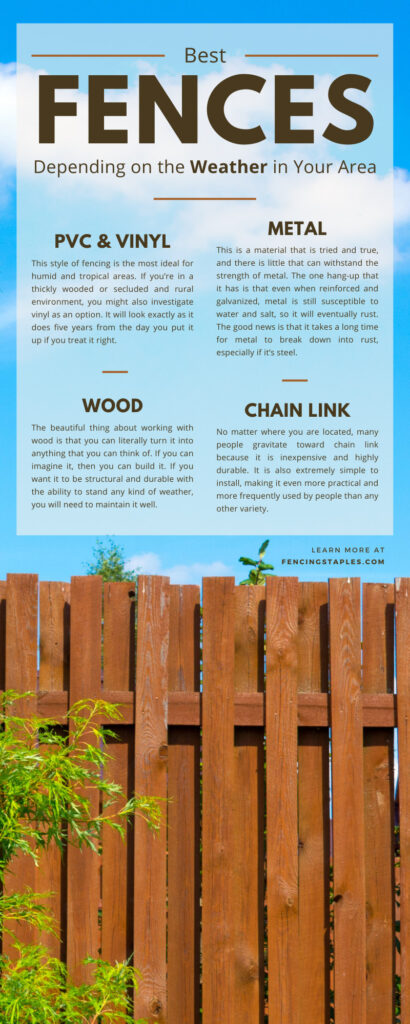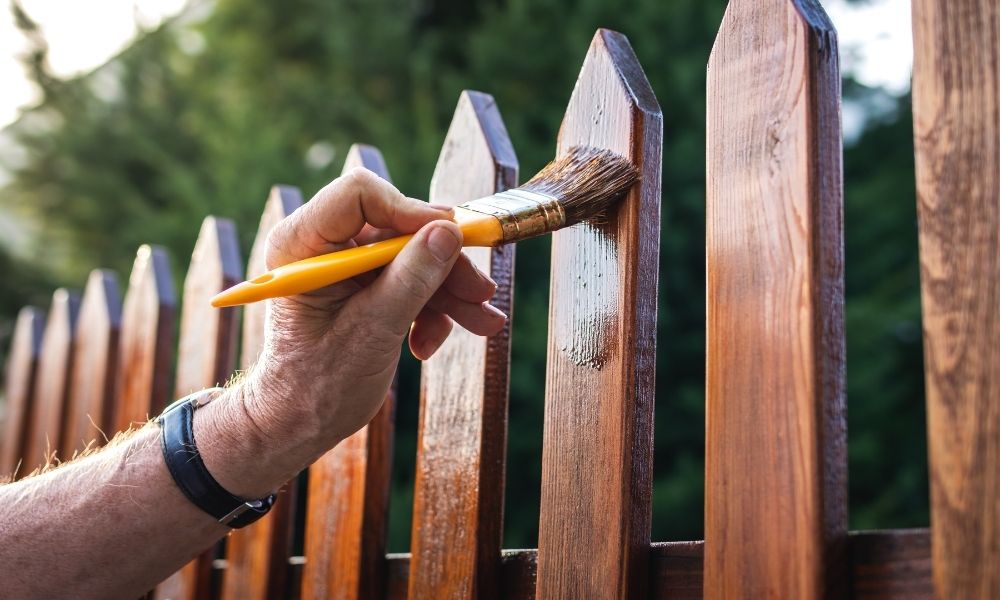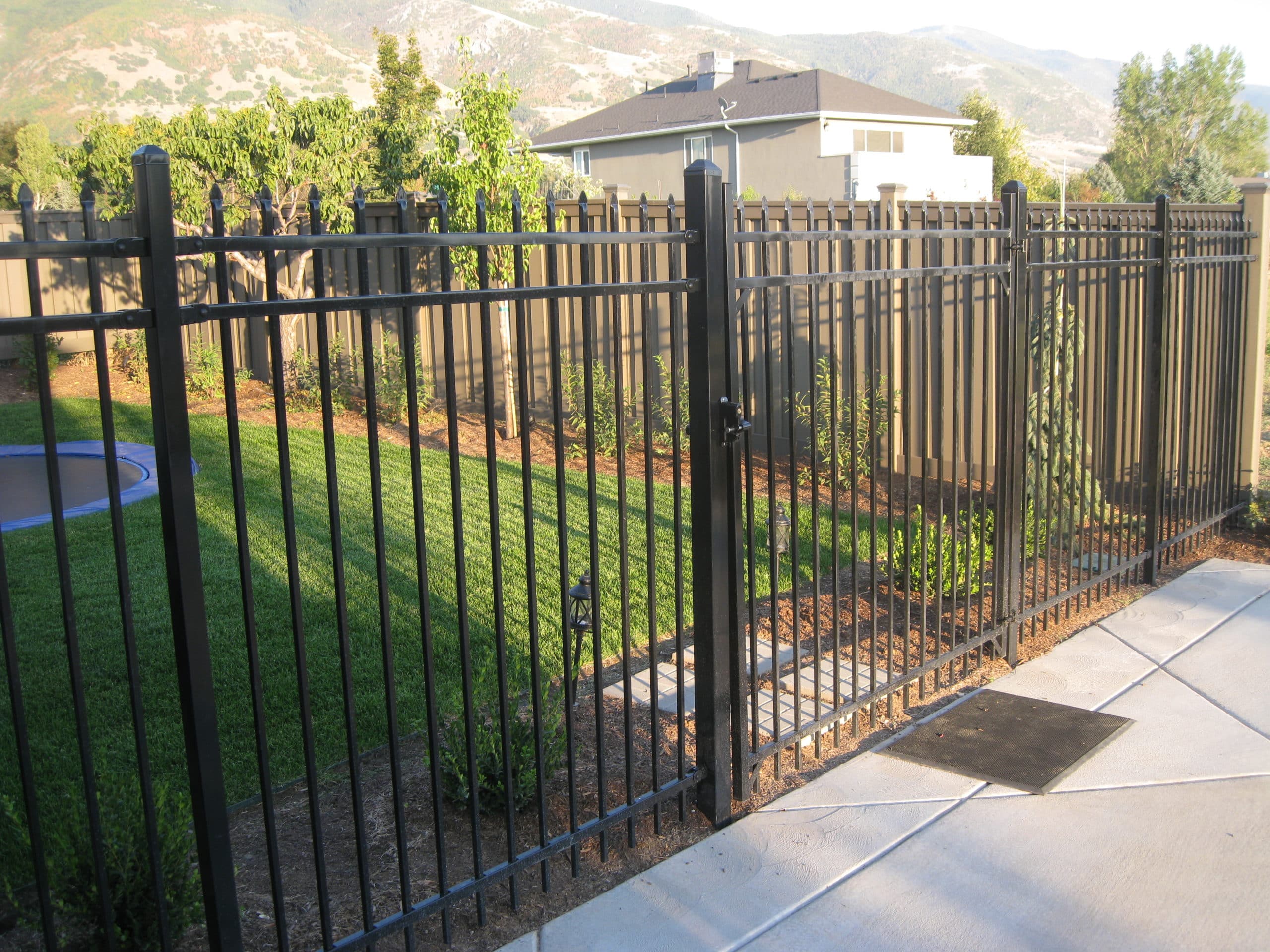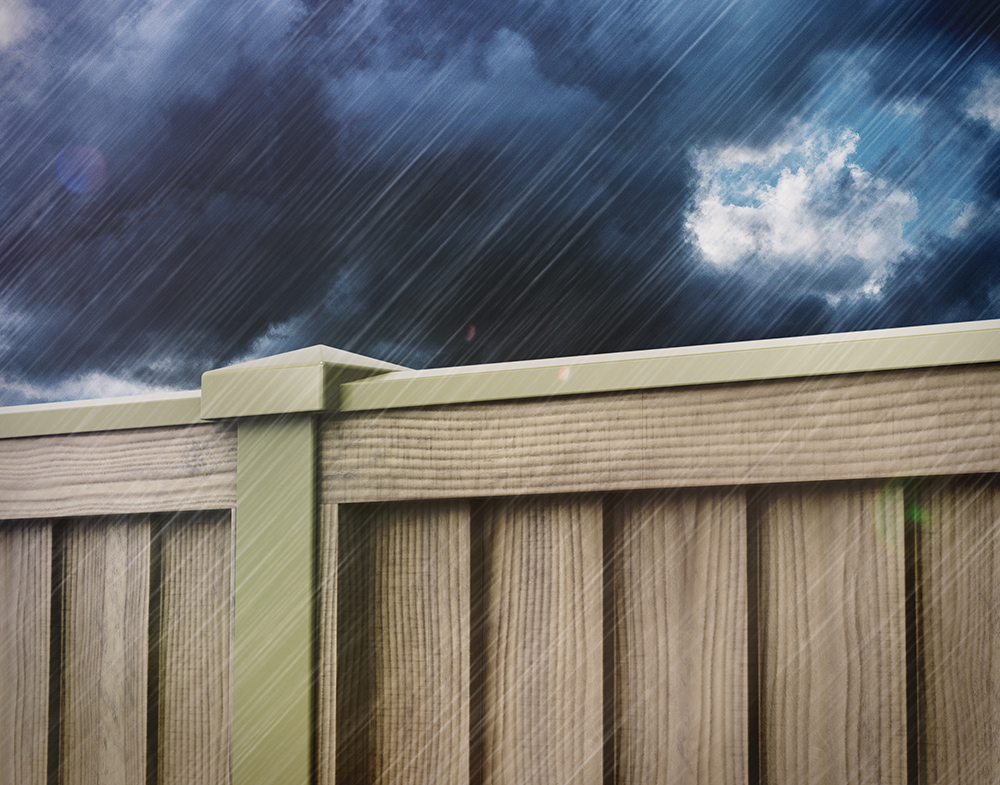Have you ever wondered how to keep your fence in good condition throughout different weather conditions? Whether it’s scorching hot or freezing cold, your fence can take a beating. But don’t worry, I’m here to help you out. In this article, I will discuss the best ways to maintain your fence in various weather conditions, so you can keep it sturdy and looking great for years to come. So, let’s dive in and learn more!
When it comes to maintaining your fence, different weather conditions can present unique challenges. For example, during hot summer months, excessive heat can cause the wood in your fence to dry out and possibly warp or crack. On the other hand, in colder climates, freezing temperatures and snow can lead to moisture buildup and potential rot or mold issues.
But fret not! I will provide you with practical tips and techniques to protect your fence in both extreme heat and extreme cold. From proper sealing and staining techniques to preventing ice buildup and snow removal strategies, you’ll find a wealth of information that will help you tackle any weather condition that comes your way. So, get ready to become a fence maintenance expert with the valuable insights and advice you’ll find in this article!
Maintaining Your Fence in Different Weather Conditions

Introduction
What is fence maintenance?
Fence maintenance refers to the regular upkeep and care of your fence to ensure its longevity, functionality, and aesthetic appeal. It involves various tasks such as inspecting, cleaning, repairing, and protecting your fence from weather-related damage. By properly maintaining your fence, you can extend its lifespan and avoid costly repairs or replacements.
Importance of fence maintenance
Maintaining your fence is essential for several reasons:
-
Protection: A well-maintained fence acts as a barrier, providing security and privacy for your property.
-
Enhancing aesthetics: A clean and well-maintained fence adds beauty to your outdoor space, enhancing the curb appeal of your property.
-
Longevity: Regular maintenance helps prevent deterioration and damage caused by weather elements, increasing the lifespan of your fence.
-
Cost savings: By addressing minor issues promptly and implementing preventative measures, you can avoid expensive repairs or full replacements in the future.
Preparing Your Fence
Inspecting your fence
Regular inspection is crucial to identify any signs of damage or wear. Walk along the fence line and check for loose boards, rust, cracks, leaning posts, or warped sections. Pay attention to any signs of pest infestation, such as termites or carpenter bees. Inspecting your fence allows you to address issues early on, preventing further damage.
Cleaning your fence
Cleaning your fence not only improves its appearance but also helps prevent mold, mildew, and algae growth. Use a mild detergent or specialized fence cleaner and scrub gently with a brush or sponge. Rinse thoroughly with water to remove any residue. For wooden fences, consider applying a sealant or stain after cleaning to protect the wood from weather damage.
Repairing any damage
If you notice any damage during the inspection, it is essential to address it promptly. Replace or repair loose boards, damaged posts, or rusted sections. For wooden fences, fill any cracks or holes with wood filler and sand the area before applying paint or stain. Metal fences may require welding or replacement of corroded sections. Timely repairs prevent further deterioration and maintain the structural integrity of your fence.

Maintaining Your Fence in Hot Weather
Protecting against sun damage
Excessive sunlight can cause fading, drying, and warping of various fence materials. Apply UV-resistant sealants or coatings to wooden fences to protect them from sun damage. Consider using shading devices, such as pergolas or awnings, to provide additional protection from direct sunlight.
Avoiding warping and shrinking
Hot weather can lead to the contraction and expansion of fence materials, resulting in warping and shrinking. Ensure that fences are built with appropriate spacing between boards or panels to accommodate these natural movements. Regularly check and adjust any loose fasteners to prevent warping and ensure a secure fence structure.
Dealing with heat-related issues
During hot weather, fences may become hot to touch, posing a risk to children and pets. Install warning signs or barriers to prevent accidental contact. If you have a metal fence, consider painting it with reflective or lighter colors that absorb less heat. Providing shaded areas near the fence can also help minimize heat-related issues.
Maintaining Your Fence in Cold Weather
Preventing frost and freezing
Cold weather can cause frost accumulation and freezing, which may lead to damage like cracking or splitting of materials. Insulate wooden fences by applying a weatherproof sealant or painting with high-quality paint. Remove snow buildup from the top of the fence to prevent excessive weight and potential collapse.
Handling snow build-up
Heavy snowfall can put additional pressure on fences, especially if they are not built to withstand such loads. Use a snow rake to gently remove snow from the fence. Avoid using sharp tools that may damage the material. Consider reinforcing weak areas or adding support structures to prevent damage from snow accumulation.
Addressing ice damage
Freezing temperatures can cause ice to form on fences, leading to potential structural damage or breakage. Use de-icing products to minimize ice buildup and prevent accidents. Be cautious when removing ice, as excessive force can result in unintentional damage. Regularly inspect and repair any visible signs of ice-related damage.

Maintaining Your Fence in Rainy Weather
Preventing water damage
Excessive rainwater can lead to rot, mold, and water damage in wooden fences. Apply waterproof sealants or coatings regularly to protect the wood. Ensure proper drainage by clearing any debris or vegetation obstructing the water flow. Consider installing gutters or downspouts to divert rainwater away from the fence.
Avoiding mold and mildew
Moisture from rain can create an ideal environment for mold and mildew growth. Clean your fence regularly and remove any visible signs of mold or mildew using a mild detergent or bleach solution. Rinse thoroughly to prevent any residue from accumulating. Ensure that the fence has proper ventilation to allow air circulation and prevent moisture buildup.
Drainage solutions
If your property is prone to heavy rainfall or pooling water, consider implementing drainage solutions around your fence. French drains, swales, or grading the landscape can help redirect water away from the fence. Proper drainage prevents water saturation, which can weaken the fence’s foundation or lead to soil erosion.
Maintaining Your Fence in Windy Weather
Securing loose panels
Strong winds can dislodge or damage fence panels, compromising the overall structure. Regularly check for loose panels and secure them with reinforced fasteners or brackets. Replace any damaged panels promptly. Reinforce your fence by installing windbreaks or planting wind-resistant vegetation around it.
Protecting against gusts
For areas with frequent gusts, consider installing a windbreak fence parallel to the main fence structure. This additional layer creates a barrier that helps redirect or reduce wind force. Windbreak fences are typically constructed with more substantial materials, such as concrete or solid wood, to withstand strong winds.
Choosing wind-resistant materials
If you live in a windy area, choose fence materials that are known for their wind resistance. Vinyl, metal, or composite materials are often more durable compared to traditional wood. Ensure that the fence design allows wind to pass through the gaps between panels, reducing the risk of wind damage.

Maintaining Your Fence in Stormy Weather
Preparing for hurricanes or tornadoes
In regions prone to hurricanes or tornadoes, it is essential to take extra precautions to protect your fence. Trim nearby trees or branches that may fall or cause damage during a storm. Reinforce the fence structure, particularly the posts, with concrete or sturdy footings. Consider removable panels that can be taken down to reduce wind resistance.
Emergency repairs
After a storm, inspect your fence for any damage or structural failures. Promptly address any issues to prevent further deterioration and ensure safety. Remove debris, such as fallen branches or loose objects, from the fence. If necessary, contact a professional to assess and repair extensive storm damage.
Cleanup after storms
Storms may leave behind debris or dirt on your fence. Clean the fence using a mild detergent and water to remove any residue or stains. Inspect the fence for hidden damage or weak spots caused by the storm. Remove or replace any broken or severely damaged sections.
Maintaining Your Fence in Dry Weather
Preventing cracking and splitting
Dry weather conditions can cause wooden fences to dry out, leading to cracking or splitting. Apply an appropriate wood sealer or stain to retain moisture and prevent excessive drying. Regularly water the soil around wooden fence posts to maintain moisture levels and prevent them from becoming brittle.
Moisturizing wooden fences
Wooden fences benefit from regular moisturizing to keep them in optimal condition. Apply a wood-friendly oil or moisturizer to prevent drying and promote flexibility. Avoid using petroleum-based products as they may damage the wood fibers. Moisturizing your fence can help prevent cracking, warping, and splintering.
Handling drought conditions
During drought conditions, water scarcity may impact the health and stability of your fence. Prioritize watering the soil around fence posts to maintain moisture levels. Avoid excessive water usage but provide enough for the fence to withstand the dry spell. It is also advisable to monitor any signs of drying or structural weakness and address them promptly.

Maintaining Your Fence in Humid Weather
Combatting moisture damage
In humid environments, excessive moisture can lead to mold, rot, and decay in wooden fences. Regularly inspect your fence for any signs of moisture damage, including discoloration, soft spots, or a musty odor. Treat affected areas with a suitable wood preservative or fungicide to prevent further decay.
Preventing rot and decay
To prevent rot and decay in humid weather, proper airflow is essential. Trim vegetation around the fence to allow air circulation and sunlight exposure. Apply a water-resistant sealant or stain that forms a barrier between the wood and moisture. Avoid direct soil contact by using concrete or metal post supports.
Choosing suitable materials
In humid climates, certain fence materials perform better than others. Vinyl and aluminum fences are resistant to moisture, rust, and rot. Composite materials are also a good option as they have minimal susceptibility to moisture damage. Consider the climate and humidity levels before selecting the most suitable fence material.
Maintaining Your Fence in Coastal Areas
Protecting against saltwater corrosion
Coastal areas are prone to saltwater corrosion, which can degrade fences over time. Choose materials like aluminum, stainless steel, or vinyl that are resistant to saltwater damage. Regularly rinse your fence with fresh water to remove salt deposits. Apply a protective coating or sealant to minimize the impact of salt exposure.
Dealing with sand and salt
Coastal areas often have windy conditions that can blow sand and salt onto your fence. Routinely clean your fence using water and a gentle brush to remove sand and salt particles. Avoid using abrasive cleansers that may scratch the surface. Correct any signs of sand erosion and repaint or reseal if necessary.
Coastal weather considerations
Coastal regions often experience higher wind speeds and humidity, which can accelerate fence deterioration. Choose fences built to withstand harsh coastal weather conditions. Consider investing in stainless steel or galvanized fasteners to minimize rusting. Regularly inspect your fence, especially after storms, and address any issues promptly.
Maintaining Your Fence in Urban Environments
Addressing pollution damage
Urban environments may expose your fence to pollutants, exhaust fumes, or chemical residues. Regularly clean your fence using mild detergents to remove any surface contaminants. Apply a protective finish or sealant to prevent chemical damage. Consider planting shrubs or trees as a natural barrier against pollution.
Protection against graffiti
Urban settings may also be more prone to graffiti or vandalism on fences. Choose materials that are easy to clean or repaint, such as vinyl or metal. Apply anti-graffiti coatings that allow for easier removal of paint or markers. Install security cameras or motion-sensor lights to deter potential vandals.
Noise reduction solutions
To minimize urban noise pollution, consider adding noise-reducing elements to your fence. Planting dense vegetation along the fence can act as a natural sound barrier. Alternatively, add noise-absorbing materials or install acoustic panels to reduce noise transmission. Consult with a professional to determine the most effective noise reduction solutions.
Maintaining Different Material Fences
Wooden fence maintenance
Wooden fences require regular maintenance to prevent rot, warping, and insect infestation. Inspect the wood for signs of damage and repair or replace any affected areas promptly. Clean the fence regularly and apply a water-resistant sealant or stain. Respect the recommended maintenance intervals for resealing or repainting.
Vinyl fence maintenance
Vinyl fences are relatively low maintenance but require attention to prevent discoloration or cracking. Inspect the fence for any loose or damaged panels and repair as necessary. Clean the fence using mild soap and water to remove dirt or stains. Avoid using abrasive materials that may scratch the vinyl surface.
Metal fence maintenance
Metal fences, such as iron or aluminum, require regular maintenance to prevent rust and corrosion. Inspect the metal for any signs of rust or damage and treat with a rust-inhibiting primer or paint. Clean the fence regularly to remove dirt or debris that can contribute to rust formation. Apply a protective coating or wax to enhance durability.
Professional Maintenance Services
Benefits of hiring professionals
While you can perform basic fence maintenance tasks yourself, hiring professionals offers several advantages. Professionals have the expertise and specialized tools to identify and address hidden or complex issues. They can efficiently handle repairs, upgrades, or replacements, saving you time and effort. Additionally, professionals often provide warranties or guarantees on their work.
Cost considerations
The cost of professional fence maintenance services can vary depending on the scope of work, fence type, and location. Consider obtaining quotes from multiple reputable companies to compare prices. Remember that regular maintenance can help avoid costly repairs or replacements in the future, making professional services a worthwhile investment.
Finding reputable maintenance companies
To find reputable fence maintenance companies, ask for recommendations from friends, family, or neighbors who have had positive experiences with professionals. Research online reviews and ratings for local companies. Contact several companies, inquire about their services, and request references or examples of their previous work. Choose a company with a good reputation, proper licenses, and insurance coverage.
Conclusion
Regular maintenance of your fence is essential to ensure its longevity, functionality, and aesthetic appeal. By inspecting, cleaning, repairing, and protecting your fence in different weather conditions, you can prevent deterioration, enhance its durability, and avoid costly repairs. Whether you live in hot, cold, rainy, windy, stormy, dry, humid, coastal, or urban areas, addressing weather-related challenges is crucial for optimal fence maintenance. Regular upkeep and professional maintenance services can help you enjoy a beautiful and secure fence for years to come.
Remember, a well-maintained fence not only adds value to your property but also provides security, privacy, and a welcoming ambiance to your outdoor space. Stay proactive, follow proper maintenance techniques, and address issues promptly to keep your fence in top condition. Happy fence maintenance!